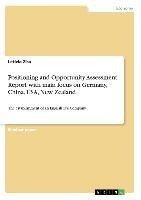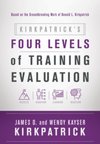
-
 Anglický jazyk
Anglický jazyk
Positioning and Opportunity Assessment Report with main focus on Germany, China, USA, New Zealand
Autor: Letizia Zisa
Seminar paper from the year 2010 in the subject Business economics - Marketing, Corporate Communication, CRM, Market Research, Social Media, grade: 1,3, Leeds Metropolitan University, language: English, abstract: PESTLE-framework
In order to analyse...
Viac o knihe
Na objednávku, dodanie 2-4 týždne
18.54 €
bežná cena: 20.60 €
O knihe
Seminar paper from the year 2010 in the subject Business economics - Marketing, Corporate Communication, CRM, Market Research, Social Media, grade: 1,3, Leeds Metropolitan University, language: English, abstract: PESTLE-framework
In order to analyse the macro environmental influences which have a considerable impact on Bettys, the English Tea Company located in the north east of England, it is economically reasonable to look at the PESTLE framework. This framework is a useful tool to understand the environment in which an organisation operates. Environmental influences never influence an organisation to the same extent, for some organisations any changes in the surrounding environment will pose a threat but for others those changes might be favourable. "Also, it will affect some organisations favourably whilst posing a threat to others" (Johnson,G., Scholes,K.,2002, p.102). The PESTLE- framework categorises the influences of the environment into six types: political, economic, social, technological, legal and environmental.
Market Entry Strategies - Entering a new market is always a critical and fundamental decision due to the advantages and disadvantages of each entry strategy, which will have an influence on the organisation's performance. "Furthermore, the choice of entry method will involve the firm in a long-term commitment from which it might find it hard to extricate itself without some cost." (Chee,H., Harris, R.,1998, p. 292). According to Chee and Harris (1998, p. 291)
"(...) it is not a practical strategy to enter all markets with one single entry method; many large companies adopt multiple entry strategies (...)".
Indirect Exporting - As illustrated in the graphics, indirect exporting involves the lowest risk factor when entering a foreign market. This is an ideal strategy for companies that have not got any contacts to the foreign market. Bettys could sell its products to an intermediary in Yorkshire, who himself then sells this products to the German market. The intermediary possesses the know-how and the resources that are necessary when entering a new market successfully.
Direct Exporting - Direct exporting allows Bettys to gain far more control about the international activities, however, the risk of failure is higher due to the costs in marketing, administration and distribution which the company has to absorb. One of the most common direct exporting strategies is franchising.
Direct Investment - Foreign direct investment is an opportunity for Bettys to become more actively involved in the international business activities. In its classic definition, FDI means investing into building a factory abroad
- Vydavateľstvo: GRIN Verlag
- Rok vydania: 2011
- Formát: Paperback
- Rozmer: 210 x 148 mm
- Jazyk: Anglický jazyk
- ISBN: 9783640914555











